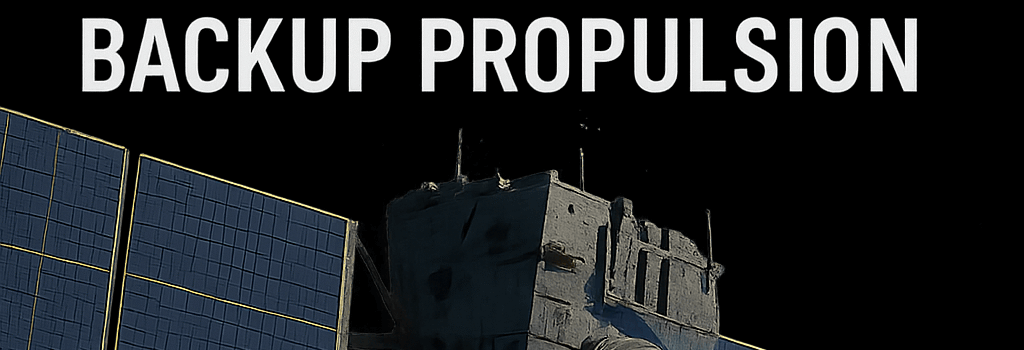NASA Psyche Spacecraft Resumes Ion Thrusters with Backup Propulsion

After detecting a pressure anomaly in its primary xenon feed line, NASA’s Psyche spacecraft successfully shifted to a redundant fuel path and reignited its four Hall effect thrusters. The switch restores full functionality to the mission’s solar electric propulsion system and keeps its August 2029 rendezvous with asteroid Psyche on track.
Propulsion System Overview
The Psyche spacecraft relies on a solar electric propulsion (SEP) architecture developed at NASA’s Jet Propulsion Laboratory. Key specifications include:
- Thruster Type: Four Hall effect thrusters, each rated at 6.5 kilowatts and delivering up to 0.2 newtons of thrust.
- Propellant: High-purity xenon gas stored at 1,000 psi in two 425-liter tanks, totaling roughly 800 kilograms at launch.
- Power Supply: Two roll-out solar arrays, generating up to 23 kilowatts at 1 AU, regulated by dual-redundant power processing units.
- Delta-V Capability: Over 3 kilometers per second cumulative velocity change during cruise, enabling fine trajectory adjustments and planetary flybys.
Primary Fuel Line Anomaly and Diagnostics
On April 1, 2025, telemetry indicated a sudden drop in xenon pressure downstream of a solenoid valve in the primary feed line. Engineers at JPL immediately disabled thruster firings to preserve propellant and initiated a series of leak-check and thermal diagnostics.
The team observed an intermittent valve seal failure that allowed pressure to bleed off at a rate of approximately 5 pascals per second. Comprehensive analysis ruled out micro-meteoroid punctures or regulator malfunctions.
Backup Line Activation and Testing
Built with full redundancy, the spacecraft’s propulsion manifold includes an identical secondary feed line and valve assembly. In late May, controllers at JPL commanded a valve reconfiguration, isolating the primary path and routing xenon through the backup line.
Following a series of 10-second test burns, the thrusters achieved nominal thrust levels and mass flow rates. By June 15, Psyche resumed continuous operations, executing a 1.2-hour thrust segment to realign its trajectory for the upcoming Mars gravity assist.
Upcoming Mission Milestones
- May 2026 – Mars flyby at 450 kilometers altitude, providing a 1.5 km/s gravity boost.
- Late 2027 – Mid-cruise trajectory correction maneuver to refine the approach to the asteroid belt.
- August 2029 – Insertion into orbit around asteroid 16 Psyche at approximately 100 kilometers altitude.
Deeper Analysis: Risk Mitigation Strategies
Redundancy is a core design principle for deep space missions. Psyche’s propulsion subsystem features:
- Dual solenoid valves per feed line to isolate faults.
- Independent pressure and temperature sensors on both lines.
- Software health checks that automatically suspend thruster commands if anomalous telemetry is detected.
Engineers are now performing accelerated life-test simulations on ground spares to anticipate whether the backup valve may exhibit similar degradation under space radiation and thermal cycling.
Deeper Analysis: Science Objectives and Expected Discoveries
Asteroid 16 Psyche is a metallic body roughly 226 kilometers across, composed mainly of iron and nickel. Key science goals include:
- Surface Mapping: High-resolution multispectral imaging to identify compositional heterogeneity down to 3 meters per pixel.
- Magnetometry: Measurement of remnant magnetic fields to constrain core formation and cooling history.
- Gamma-Ray and Neutron Spectrometry: Abundance mapping of iron, nickel, and trace elements such as gold and platinum.
These observations will test hypotheses that Psyche is the exposed core of a protoplanet that lost its rocky mantle in ancient collisions.
Deeper Analysis: Electric Propulsion Trends
Solar electric propulsion is becoming the backbone of deep space exploration. Beyond Psyche, recent milestones include:
- BepiColombo: ESA’s dual-spacecraft mission to Mercury, using four 30-centimeter ion engines.
- DART: NASA’s planetary defense test, which used dual Hall thrusters for trajectory corrections.
- Lunar Gateway: Planned NASA cislunar outpost, slated to use 50-kilowatt class Hall thrusters for station-keeping.
Dr. Elena Adams, an electric propulsion expert at Stanford University, commented: “Psyche’s successful switch underscores the maturity of SEP for complex missions. The ability to throttle and restart thrusters repeatedly is a game-changer for long-duration operations.”
With its propulsion system back in full operation, Psyche is poised to continue its spiral outward from Earth orbit, leveraging solar power and xenon propellant to reach its target in the main asteroid belt. Continuous monitoring and proactive risk mitigation will be critical over the next four years as the mission approaches one of the most intriguing objects in our Solar System.
Credit: NASA / JPL-Caltech / ASU